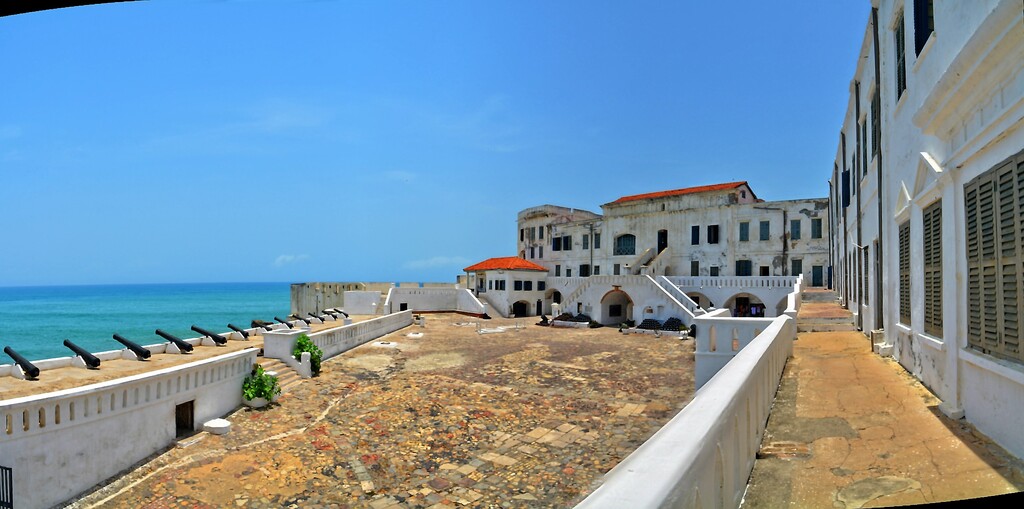
Cape Coast Castle (c) Remo Kurka photography
Dutch Takeover and Expansion of the Slave Trade
In 1637, the Dutch West India Company seized Elmina Castle from the Portuguese after a bloody siege. Under Dutch control, Elmina expanded its role in the trans-Atlantic slave trade, functioning as a holding station for enslaved Africans who were captured or bought inland and shipped off to colonies in the Caribbean and the Americas. Thousands passed through its dungeons and the infamous Door of No Return, a final threshold to lives of bondage across the ocean.
Cape Coast Castle: A New Power Emerges
Cape Coast Castle, originally a Swedish trading post known as Carolusborg, was built in 1653. It changed hands multiple times between European powers—including the Dutch and the Danes—before the British took permanent control in 1664. Under British rule, Cape Coast Castle grew rapidly in importance and would eventually supersede Elmina as the seat of British administration and trade in the Gold Coast.
Although both castles served similar functions as European trading forts and later slave depots, their timelines and affiliations varied. Elmina remained under Dutch control until 1872, while Cape Coast Castle was Britain’s principal base of operations along the coast. This rivalry between the Dutch and British fortresses created a network of fortified positions, with Elmina and Cape Coast often watching each other across the coastline, both in cooperation and competition.
The Network of Forts and the Role of Local Participation
The relationship between Elmina and Cape Coast Castles reflects the broader system of fortified trade posts established along the coast of West Africa by European powers. Over time, more than 40 such forts and castles dotted the Gold Coast, forming a complex commercial and military network.
Local African polities were not passive actors in this system. Coastal kingdoms such as the Fante, Asante, and Akwamu engaged in diplomacy, trade negotiations, and warfare to leverage relationships with the European powers. These African rulers often supplied enslaved people in exchange for European goods such as firearms, textiles, and alcohol.
British Takeover of Elmina and the Decline of the Castles
In 1872, after the Dutch ceded their possessions on the Gold Coast to the British, Elmina Castle came under British control. By this time, however, the slave trade had long been abolished—Britain banned the trade in 1807, and slavery itself was outlawed in its colonies in 1833.
With the end of the slave trade and the rise of new colonial administrative systems, the castles gradually lost their economic and strategic importance. Cape Coast Castle continued to serve as a British colonial administrative center until 1877, when the colonial capital was moved to Accra.
Legacy and Memorialization
Today, Elmina and Cape Coast Castles stand as UNESCO World Heritage Sites, preserved as powerful reminders of a brutal past. They are central to Ghana’s historical narrative and serve as places of education, mourning, and reflection—particularly for people of African descent tracing their ancestral journeys through the Middle Passage.
The connection between the two castles is not just geographic—it is historic, structural, and symbolic. Together, they represent the height of European colonial expansion on the West African coast, the depths of human suffering inflicted by the trans-Atlantic slave trade, and the enduring resilience of African communities.
While separated by only a short stretch of coastline, Elmina and Cape Coast Castles are linked by centuries of conflict, commerce, cooperation, and conquest. Understanding their shared history offers vital insights into the global forces that shaped modern Ghana—and the wider world.